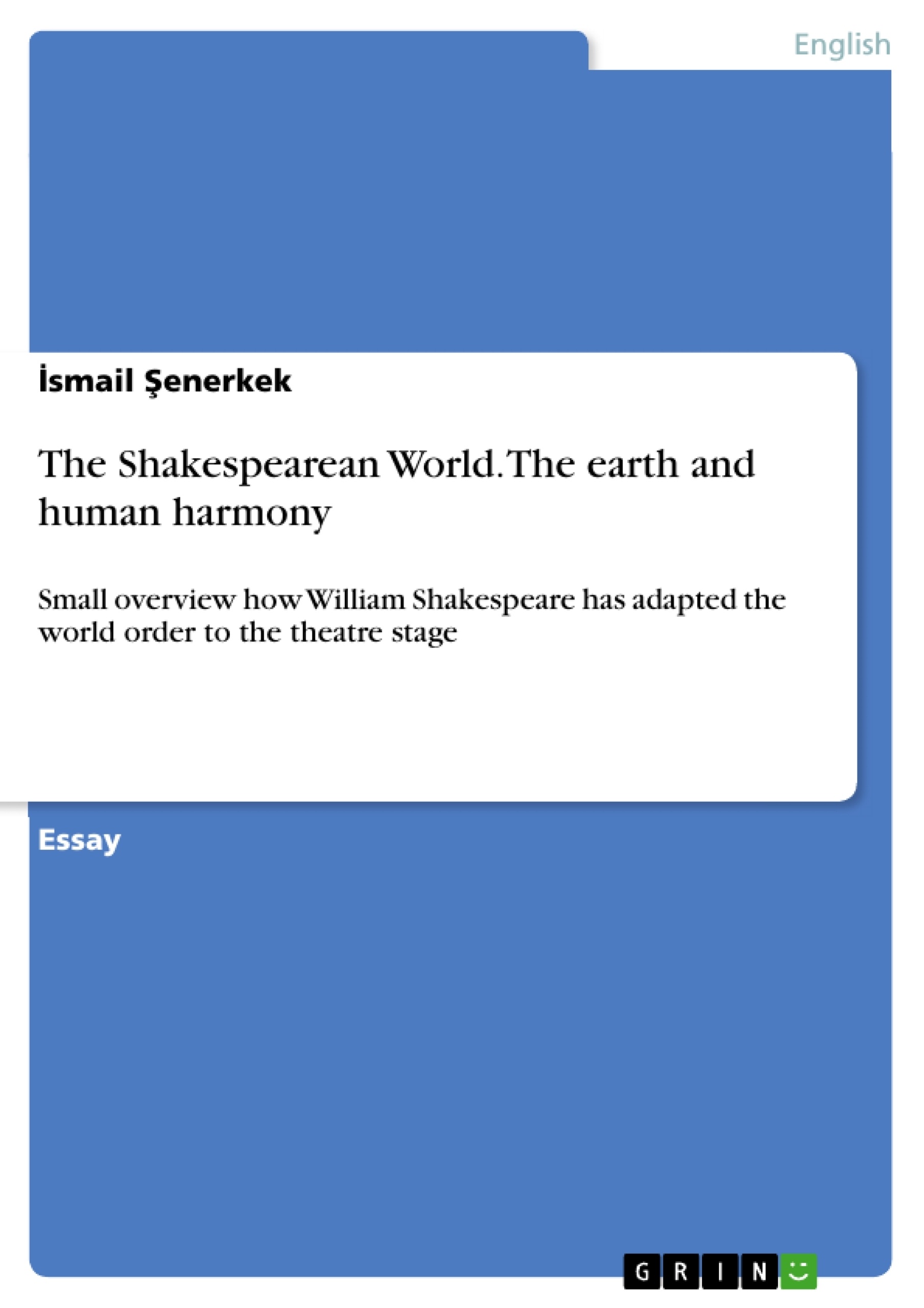In this article, how William Shakespeare has adapted the world order to the theatre stage, will be attempted to examined with the understanding of "macrocosm/microcosm relationship, the great chain of being and wheel of fortune".
Elizabeth I, who has spent almost half a century of her 70-year life ruling England, is the queen of the Elizabethan Period, known as the Golden Age of the country's history, covering the years 1558-1603. The country under her rule has developed seriously in many fields, especially in art and literature.
For Elizabeth I, who has displayed an upright and dignified stance against the Puritans, who has been opposed to the art understanding of the period, she can be said to be the most supportive of artistic activities, especially theatrical ones, in English history. During the period, the main factor of these theatrical activities is William Shakespeare, who has taken the most fundamental and definitely first place.
Inhaltsverzeichnis (Table of Contents)
- Introduction
- Microcosmic View onto Shakespeare's Stage
- The Great Chain of Being and The Wheel of Fortune from the Lens of Shakespeare
Zielsetzung und Themenschwerpunkte (Objectives and Key Themes)
This article aims to explore how William Shakespeare adapted the Elizabethan world order onto the theatre stage, focusing on the relationship between macrocosm and microcosm, the great chain of being, and the wheel of fortune.
- The concept of microcosm and macrocosm in Shakespeare's plays.
- The significance of The Globe theatre as a reflection of the world.
- The great chain of being and its influence on Shakespeare's characters.
- The wheel of fortune and its role in determining individual fate.
- The interplay between order and disorder in Shakespeare's works.
Zusammenfassung der Kapitel (Chapter Summaries)
- Introduction: This chapter introduces the Elizabethan Period and William Shakespeare, highlighting his impact on theatre and his exploration of concepts like the great chain of being, the wheel of fortune, and microcosmos in his works.
- Microcosmic View onto Shakespeare's Stage: This chapter delves into the concept of microcosm and macrocosm as understood during the Elizabethan period. It discusses how Shakespeare's plays reflect the larger world within the confined space of the theatre, with specific examples from his tragedies like King Lear and Macbeth.
- The Great Chain of Being and The Wheel of Fortune from the Lens of Shakespeare: This chapter examines the concept of the great chain of being, a hierarchical order from the divine to the smallest creatures, as it influenced Shakespeare's characters and plots. It also explores the wheel of fortune, a concept that determined an individual's place in society and their potential for rise or fall.
Schlüsselwörter (Keywords)
This article focuses on the Elizabethan worldview, William Shakespeare, theatre, macrocosm, microcosm, great chain of being, wheel of fortune, order and disorder, tragedy, and the impact of these concepts on Shakespeare's works. It emphasizes the relationship between the individual and the larger universe, societal hierarchies, and the forces that shape human destiny.
- Quote paper
- İsmail Şenerkek (Author), 2019, The Shakespearean World. The earth and human harmony, Munich, GRIN Verlag, https://www.grin.com/document/990587




